Almost from the beginning of our training, pilots are taught how to react to an engine failure. Before that, though, we’re also taught how to conduct a preflight inspection to ensure the engine (and the rest of the aircraft) is ready for what we are planning. That’s as it should be, since mechanical failures are a major component of overall accident causes, right after the pilot making a mistake. The good news is that the typical piston engine in a personal aircraft is much more reliable than it was a few years ago. The bad news is those reliability improvements often result in pilots giving little thought to piston engine aircraft reliability because failures have become so rare.
As measured by increases in the engine manufacturer’s recommended time between overhaul (TBO), engines that are operated frequently, are regularly serviced with oil/filter changes and flown with accurate instrumentation are more reliable than ever. Despite claims of aircraft piston engines being outdated technology, improved materials and manufacturing processes together with advances in engine oil/additives and enhanced maintenance practices have made a difference. But that’s not to suggest pilots and operators can’t do even more to help minimize the risk of engine failure.
Prevention
The task of preventing engine failures can be divided into two broad areas: maintenance and operation. These two general categories often overlap, especially when owner/pilots are involved in preventive maintenance. What really stands out in so many accident investigations resulting from engine failure is that pilots and maintenance personnel fail to follow established procedures. These can include conducting a very thorough engine run-up after maintenance and checking for leaks, or can be as simple as ensuring there’s oil in the crankcase.
But one of the most valuable—and easiest—ways to help prevent an engine failure is to closely monitor the engine parameters reported by the aircraft’s instrumentation. Checking and recording previous indications like oil temperature, cylinder head temperatures, oil pressure and coolant temperature (if so equipped) and comparing them to what you’re seeing today at least can help prevent the “I don’t know if that’s low or high” conversion with your mechanic. A digital engine monitor literally can be a life-saving piece of equipment when used to compare long-term trends (as well as ensure proper daily operation).
That said, pilots also must allow sufficient time to adequately preflight an aircraft and engine, especially after maintenance was performed, and to allow it to warm to operating temperature, especially in cold weather. This simply is good airmanship, along with checking that there’s sufficient fuel aboard. Preflighting with a checklist is one of the many established procedures that is very important in preventing engine failure.
Components and accessories
In addition to the crankcase and cylinders, modern aircraft piston engines incorporate numerous external components and accessories. These can include a fuel pump, a carburetor or fuel injection system, magnetos, a starter, at least one alternator, perhaps a propeller governor, a vacuum pump and more. Each can contribute to or cause an engine failure, or result in another kind of problem. (See the article beginning on page 4 of this issue for a discussion of vacuum pumps.) These components are very important and need to be carefully checked and inspected at regular intervals.
Magnetos probably are the heart of an engine. Since there usually are two of them present, it seems unlikely both would fail at the same time. A 500-hour magneto inspection and adjustments are recommended for both Slick and Bendix magnetos.
Carburetors are another component that rarely causes a complete engine failure but do occasionally malfunction. Floats can sink or stick, and the throttle or mixture linkage can become disconnected, among other problems.. Water or other contaminates mixed with fuel can cause immediate engine failure. Moisture even in small amounts can damage a carburetor or fuel injection system with corrosion or contaminants, disrupting fuel flow to the engine.
Exhaust systems should be checked for cracks, leaks and signs of extreme heat. An important check is to look up the tailpipe, checking that internal baffles are not loose, cracked or missing as pieces of baffle or internal exhaust material can block the exhaust outlet causing a reduction in power.
Gear-driven starters, starter drives and gear-driven alternators all have been known to fail, causing metal chips to spread throughout the engine. If an engine starter does not operate properly, carefully check for internal engine damage after the starter drive unit—don’t just replace the starter. Belt-driven alternators are usually not a problem unless there is evidence of an out-of-balance condition or the drive belt and pulleys are not aligned properly.
Vacuum pumps, propeller governors and other accessories must be attached and torqued properly to provide for trouble-free operation. These components can indirectly cause an engine failure due to an oil leak from a loose oil line or improperly torqued mounting nuts. Minor details overlooked during inspections or even on a preflight can cause major problems once airborne, leading to a possible engine failure.
Operating considerations
Years ago, when engines were not as reliable as the modern aircraft engine is today, pilots were very concerned about when/where they were operating. Night, over water, over high terrain or a combination of factors that would prevent a successful forced landing in single engine aircraft were avoided. They often still are today, but improved instrumentation as well as enhanced reliability means pilots are less reluctant to fly a single-engine aircraft in such conditions.
But can you identify and understand what your engine may be telling you? How about the engine with “morning sickness”—a rough-running condition that clears up after a few minutes of operation—are you not concerned this is abnormal? What about an engine that backfires occasionally—do you just ignore it and continue your taxi out for takeoff?
During climb and cruise, are you in the habit of scanning engine instruments for abnormal readings? Do you know what is normal? Engine oil pressure fluctuations or excessive oil temperature may signify an impending engine failure. Don’t wait for the engine to fail; proceed to the nearest airport and find out what could be causing the problem. Don’t ignore the signs of trouble, it’s not worth the risk of an accident or expensive engine repairs should a failure occur.
Prior to or during takeoff, have you determined that the engine or engines are in fact developing full power? One popular rule of thumb (cited in the Aeronautical Information Manual) is to discontinue the takeoff if the airplane hasn’t reached at least 70 percent of takeoff speed halfway down the runway. As a pilot, I have been faced with a situation where an engine was developing full power on takeoff but shortly after liftoff I experienced a significant reduction in engine power. The engine kept running, but the aircraft would not climb. I was able to return to the airport and land with a partially blocked exhaust outlet.
Every situation is different, and you should have a plan in mind where you will go if an engine fails or malfunctions, especially during take-off. How much power do you need to maintain level flight? Would you land with the gear up, just to be able to make the airport or would you land in a residential area straight ahead? These are difficult decisions to make, so take the time to consider all the factors for every takeoff. Declare an emergency, and the sky and airport are yours; you can land on any runway, taxiway, or ramp—but don’t prioritize trying to save the aircraft or engine over surviving an accident, one that you and your passengers can walk away from.
Aren’t engine failures rare?
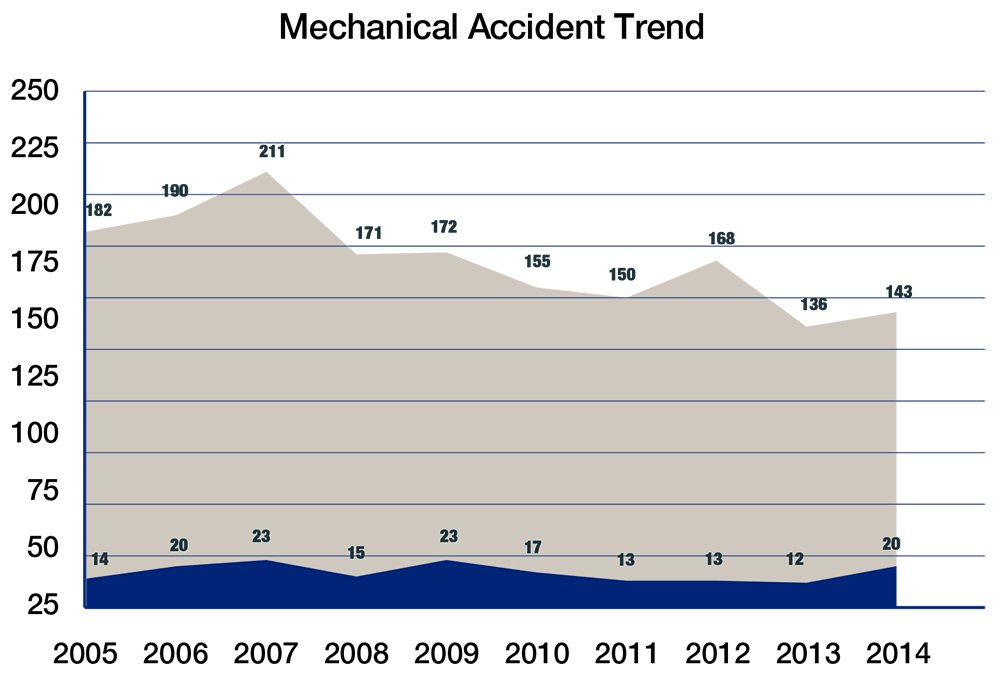
A reader recently wrote to ask about the seemingly high number of engine-failure accidents appearing in the preliminary NTSB reports published each month in the back pages of this magazine. We responded in our February 2018 issue, in part, by pointing to a graph released by the General Aviation Joint Steering Committee (GAJSC). That graph, as we wrote, “indicates in-flight loss of control continues to lead the list of fatal accident defining events, followed distantly by controlled flight into terrain and then system component failures, powerplant.” In the “a picture is worth a thousand words” category, it turns out the AOPA Air Safety Institute’s 26th Joseph T. Nall Report, which examined GA accidents in 2014, includes similar data.
Figure 1 is the chart from the GAJSC we published in February. (Disclosure: The Aircraft Electronics Association compensated me to participate in the GAJSC’s meetings considering powerplant failure-related accidents and their mitigation.) According to the GAJSC’s data, system component failure, powerplant is the third-leading cause of general aviation accidents.
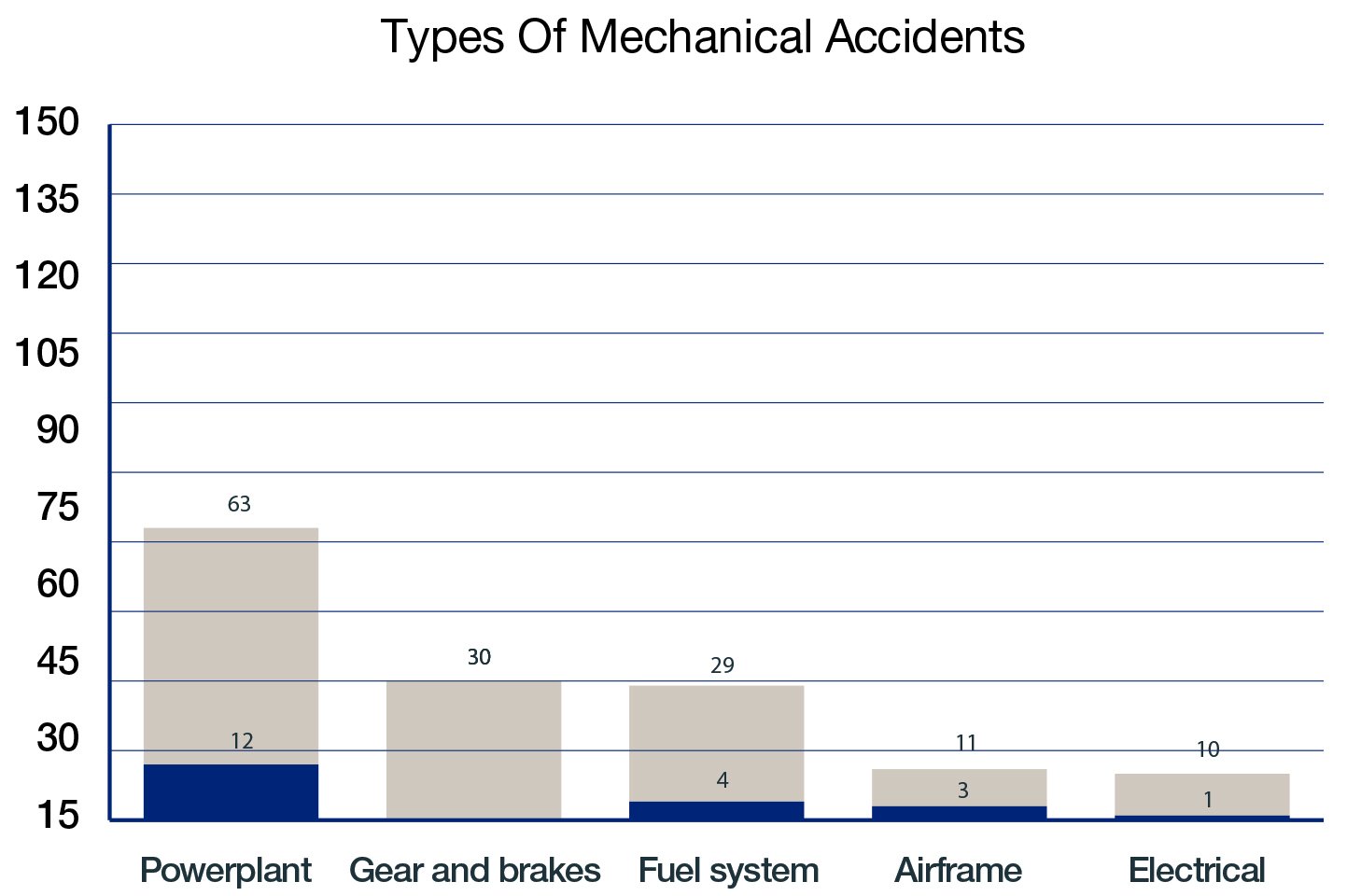
Second, the bottom two images are from the AOPA-ASI’s 26th Nall Report, which examined accidents occurring in 2014. The trend in accidents resulting from “documented mechanical failures or errors in aircraft maintenance,” as defined by AOPA-ASI, has been relatively flat in recent years, which is shown in Figure 2. Figure 3 shows that powerplants lead the pack in both total and fatal mechanical-failure accidents.
Is the risk of an accident resulting from engine failure too high? Thousands of operators don’t think so. Does the risk of an engine failure exist? Absolutely. — J.B.
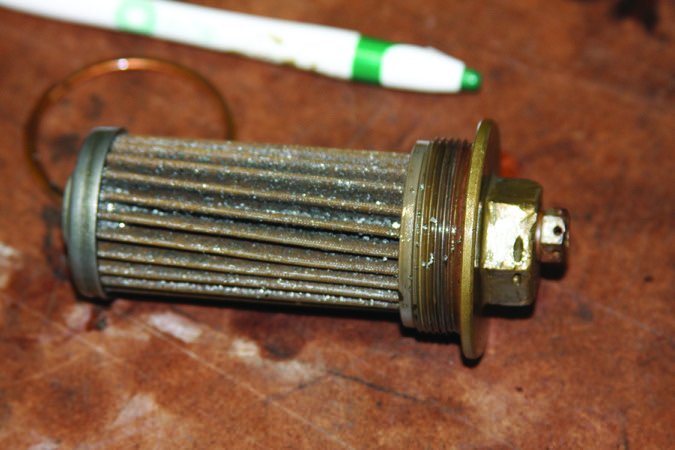
Maintaining Continued Airworthiness
In referencing TBO extension documentation for both Continental (SIL 98-9C) and Lycoming (Service Instruction 1009 BB) engines, it is important to completely understand the appropriate instructions and notes. Continental states, “An engine’s published TBO does not mean that every engine will operate the number of hours or years without requiring component replacement and/or unscheduled maintenance events.”
As a pilot, you can expect that an aircraft engine will produce 100 percent of its rated power from day one to the last hour or year of TBO, provided it has been maintained and operated according to service instructions, bulletins, airworthiness directives and instructions for continued airworthiness. While operations beyond TBO are often conducted, there can be an indeterminate, greater risk associated with TBO “busting.” Often overlooked is the 12-year calendar limit to TBO from both Lycoming and Continental. This serves to highlight the fact that limited use and lengthy periods of inactivity contribute to the reduced reliability and useful life of any piston engine.
Making It To TBO
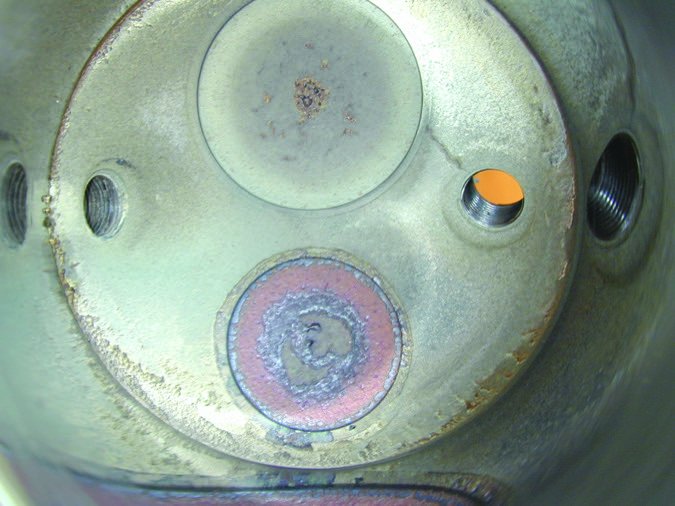
Aircraft piston engine reliability starts with assembly of a new, remanufactured or overhauled engine using the approved parts, processes, procedures and special tools spelled out in manufacturer’s technical manuals. Once the engine is placed in service and on the way to TBO, it’s up to the owner/operator and the maintenance technician to monitor the engine and properly maintain it.
At top right is an engine screen showing heavy metal contamination. An engine “making metal” like this is suffering from lack of lubrication, improperly assembled parts or both. Oil analysis can help determine the metal’s origin—crankshaft bearings, for example, or piston pin plugs—but a teardown may be in its future.
At bottom is the interior of a cylinder removed after the circled crack was discovered during a routine inspection. Although the exhaust valve at the bottom of the image looks distressed, it’s not. A distressed valve would exhibit asymmetrical coloration resulting from uneven heating.
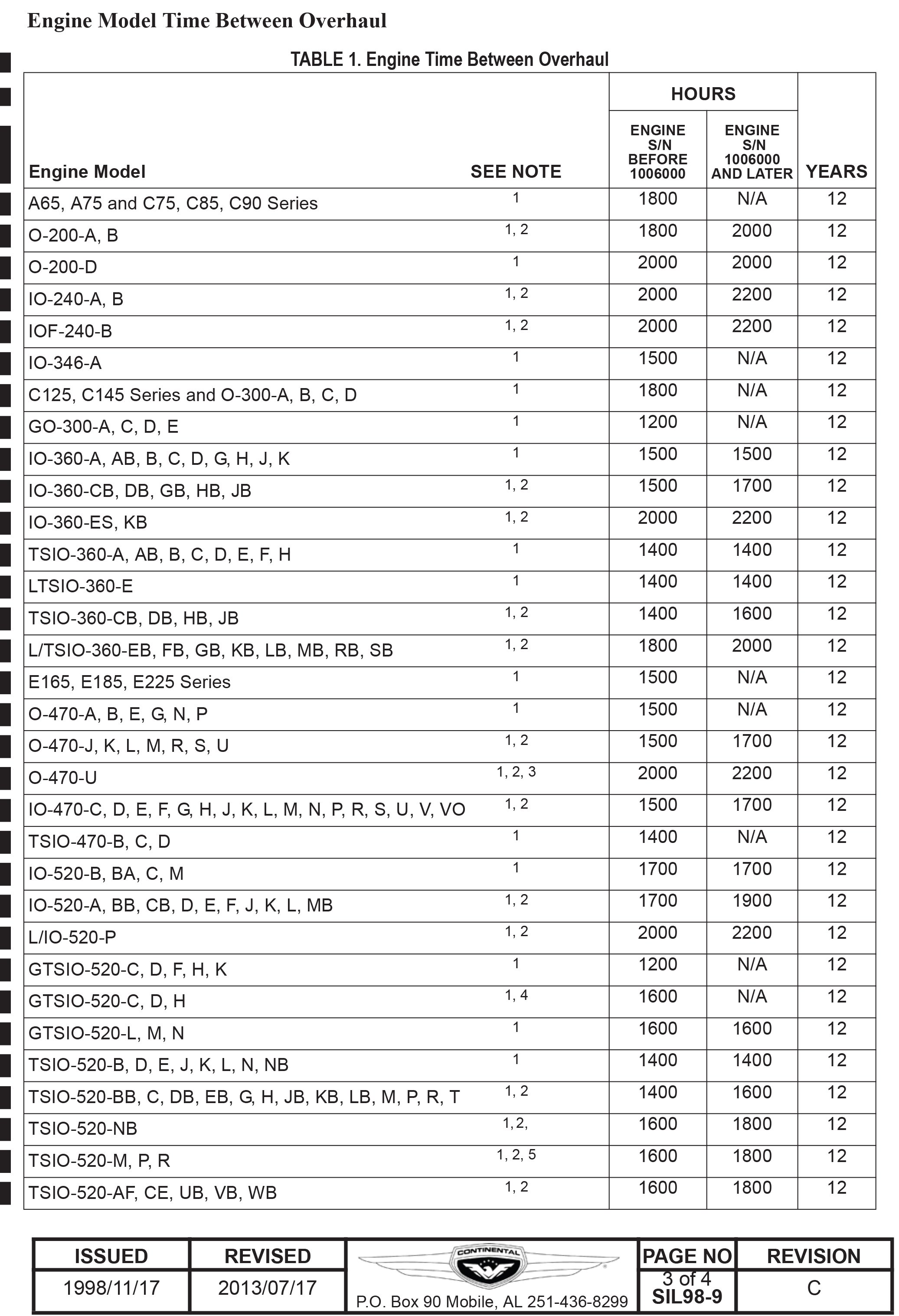
Final thoughts
While aircraft engines are now more reliable than they have ever been, failures do occur. Often there are signs of impending trouble, which, if addressed early on, could prevent malfunctions or complete failure. While safety is the first concern, economy should also stimulate your interest in preventing costly malfunctions by following all recommended maintenance and operational procedures. Waiting until something is broken before fixing it is not acceptable.
High engine reliability can be attributed to the fact that after many, many years of experience, aircraft engine manufacturers and aviation professionals know what makes an engine reliable and have shared this information in technical data readily available to everyone. Install an engine monitor, and learn how to use it. Monitor your engine’s condition, and listen to what it’s telling you.
Mike Berry is a 17,000-hour airline transport pilot, is type rated in the B727 and B757, and holds an A&P ticket with inspection authorization.

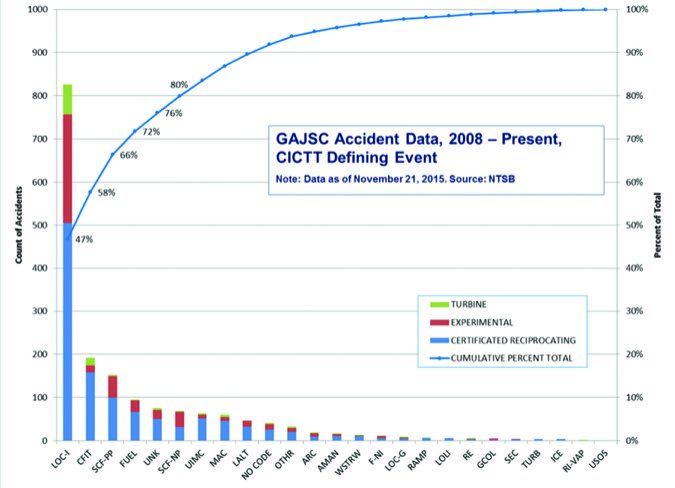



Great article. I would love to see a follow up on how CFI’s can help students learn to take care of the engine in flight, especially in training aircraft.
Thank you for a great article and great publication,
Matt Blythe
CFI/ DPE
Good article. I really think it is so important to monitor the engine gauges thru many flight in various temp to know “what is normal” Great clue to why is it different today etc.
Paul Sciortino AGI/IGI Instrument / GA Pilot
The NTSB aviation accident data base, and hence the AOPA Nall report seriously understate the number of engine failures (System Malfunction – Powerplant). Unless the engine failure results in either an NTSB (830) accident or an FAA incident there is no record of the event. Based on a survey with responses provided by 1026 pilots of SE Piston engine powered factory built (Non- EAB) aircraft only 20% of total engine failures resulted in reportable accidents, while fewer than 5% of partial engine failures resulted in reportable accidents. This large sample was collected between 2014 and 2016 using several aviation centric forums, direct solicitations to several flight schools from around the country. Respondents ranged in experience from low time students to very high time ATPs. Most respondents were from the US or Canada. Total time in SE piston engine production aircraft ranged from 10 hours to over 12,000 hours. While the article is interesting, and suggestions for maintaining the health of engines are very worthwhile, the author’s misplaced reliance on NTSB data distorts the risk of engine failure. While it is true that well maintained engines are relatively reliable, it is clear that piston engine failures (either complete loss of power, or partial loss) are not the “rare” events many would like to believe. What IS clear, is that well trained pilots are able to cope with loss of power in most circumstances. That said, those of us who fly in IMC, at night, over water, or over mountains lose our ability to use superior skills to overcome loss of thrust. Superior judgement, on the other hand, suggests we avoid flights where we can’t see where we will land (IMC, night) or where landing conditions are not favorable for a survivable landing/and or post crash survival. With any SE aircraft, “two [engines] is one, while one [engine] can easily become none”.